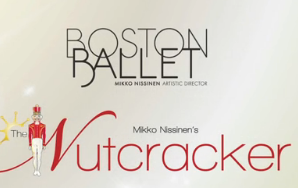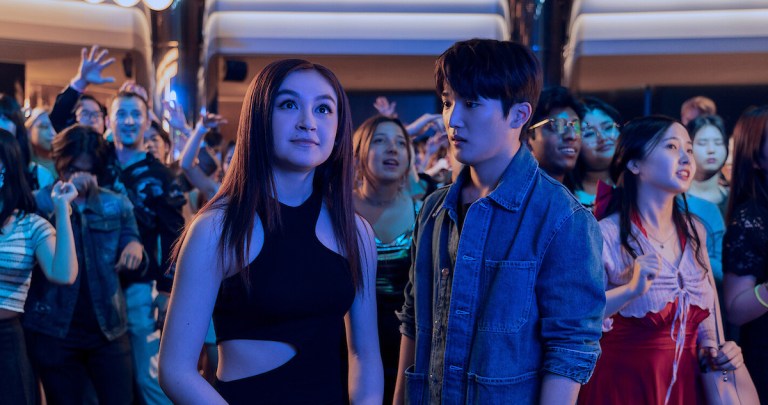Why Do We Love The Nutcracker?
Like the holidays themselves, where the story leaves off, our interpretations begin.
By Thought Catalog Sponsored Posts

Thanksgiving has passed. Soon those leftovers will be eaten or find their way to that far-back part of the refrigerator, and then we will look forward to the holidays. That’s how a season begins – it becomes that next thing on the horizon, the point on which the parallel lines of our tracks converge.
Anticipating the holidays means looking forward to wonderful things — family and friends, giving gifts, food, drinks, festivity and cheer. But all this has another side — we must think about schedules and work, buying things, potentially unpleasant relationships, and the commercialism of a time of year whose origins are so innocent. The holidays are what we make of them.
This is part of what makes The Nutcracker so fascinating. The Nutcracker is the quintessential holiday ballet, nearly synonymous with the season. The plot revolves around Christmas, sure, but that alone doesn’t explain it’s immense popularity. After all, the ballet was panned by some critics when it debuted in St. Petersburg in 1892, and not much was heard from The Nutcracker until 1954, when George Balanchine, the father of the New York City Ballet, revived it. Then, tradition of the holiday Nutcracker quickly swept through the United States, giving way uncountable versions, with their own staging, choreography, scores, costumes – and interpretations.
The Nutcracker draws on a story called “The Nutcracker and the Mouse King” written in 1816 by the German, ETA Hoffman. Hoffman was a father of the fantasy and science fiction genres, using them to make meaning at a time when Europe was a place of both enlightenment ideas and bloody battles at the whims of kings. Some interpretations of his Nutcracker say it’s a coded commentary on the Napoleonic wars.
In the story, a man named Drosselmeyer, an inventor and tinkerer, arrives at a holiday party bearing gifts. While the other children play with the fancier presents, Clara, the daughter of the house and Drosselmeyer’s goddaughter, takes an interest in a simple wooden nutcracker. That nutcracker, we come to learn, is a prince on whom the Mouse Queen has laid a curse. That night, as Clara sneaks downstairs to tend to her beloved Nutcracker, he comes to life, and alongside all the other toys, fights a battle against the Mouse King and his mice. At the decisive moment, Clara sacrifices her shoe to distract the Mouse King, saving the Nutcracker’s life, who then kills the mouse. The Nutcracker is transformed back into a Prince, and he and Clara fly off to the land of sweets, where we see the dances of the Sugar Plum Fairy and all the candies, and where Clara and the Prince become King & Queen forever.
It is a festive, redemptive story, but in its various tellings the meaning is far from clean-cut. In some versions Clara is a child — the Prince’s Queen is the Sugar Plum Fairy. In others, Clara becomes an adult when the fantasy world begins; in still others both she and the Nutcracker/Prince are just coming-of-age. Sometimes, at the end, Clara ends up back in bed, as though it were all a dream. It is clear that Clara breaks the Nutcracker’s curse through the innocence and purity with which she is able to see and to love – but to what end? Like the holidays themselves, where the story leaves off, our interpretations begin.
This in part is what makes The Nutcracker so compelling, and so ubiquitous around this time of year. Unlike other storytelling mediums, the ballet has very few words. Perhaps, therefore, it both asks more of us, and gives more to us. We decide what we want to believe and watch it play out, a feast to all our visual and aural faculties except those mechanical turns by which we process words.
Which brings us to the reason to see The Nutcracker this year, and every year, but especially in Boston, with Mikko Nissinen’s interpretation for Boston Ballet. Nissinen, once an award-winning dancer himself, is credited as Artistic Director with bringing life and an adventurous spirit back to Boston Ballet, and making it one of the most watched-after companies in the country. While preserving the classic holiday tradition in Boston, this season’s completely re-vamped Nutcracker, award-winning designer Robert Perdziola and new choreography from Nissinen. Leaked sketches of the sets and costumes reveal something classic mixed with the modern – and all very real.
Why is The Nutcracker a holiday classic, and why do so many see it every year? Like the holidays, The Nutcracker tells a universal story that teaches us how we can be at our best. Yet also like the holidays, the nuance, the execution, and the final result are open to our interpretation. They will be what we make them to be. The Nutcracker is a must-see piece of our holiday culture, from which there is a lot to learn. To be honored with Nissinen’s team, at the top of their game, granting us their interpretation is not to be missed. For Boston, it may be this holiday season’s greatest gift.
This post was sponsored by our friends at Boston Ballet in honor of the all-new Nutcracker opening on November 23. For tickets and information, and to follow the journey of the creation of Boston’s new Nutcracker, visit www.bostonballet.org/nutcracker2012



